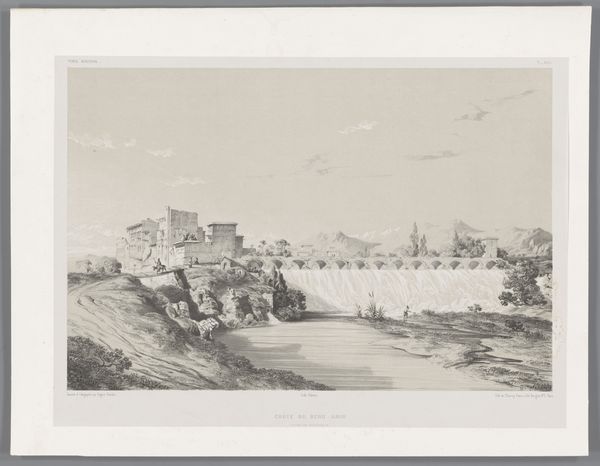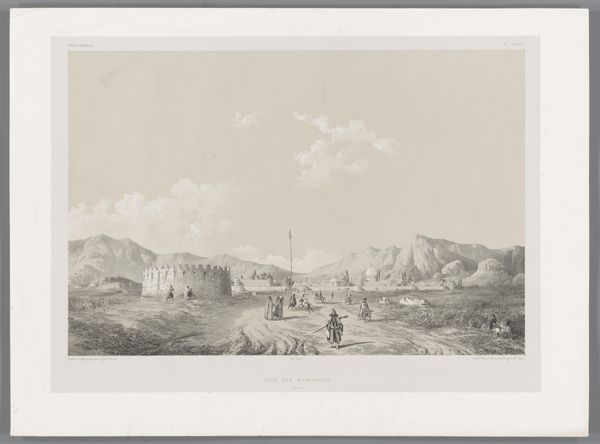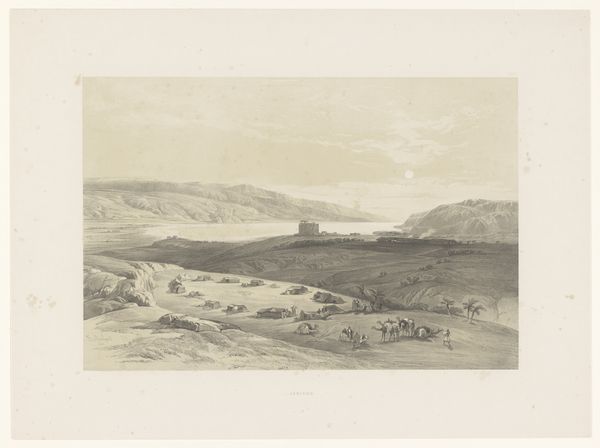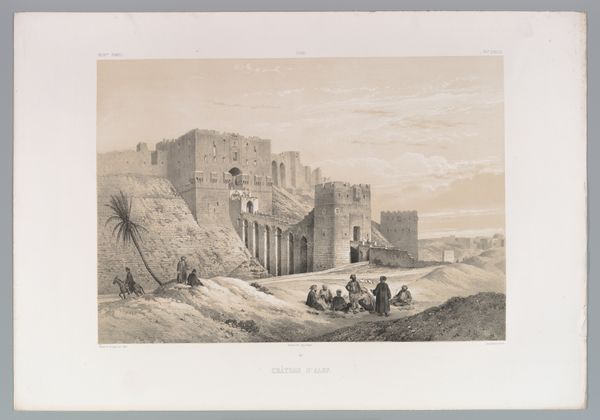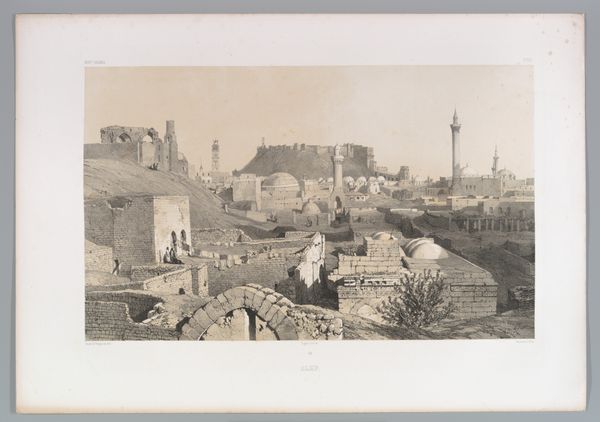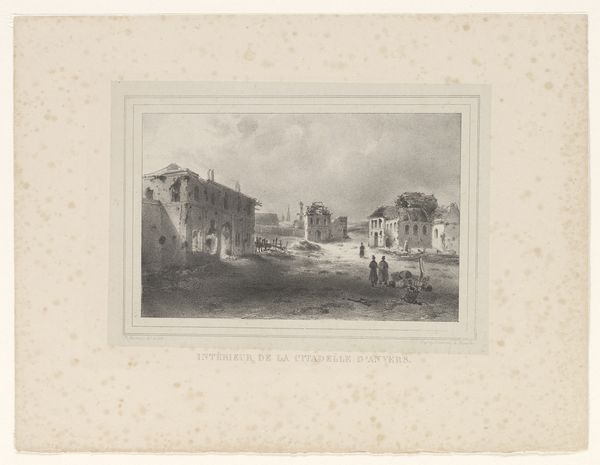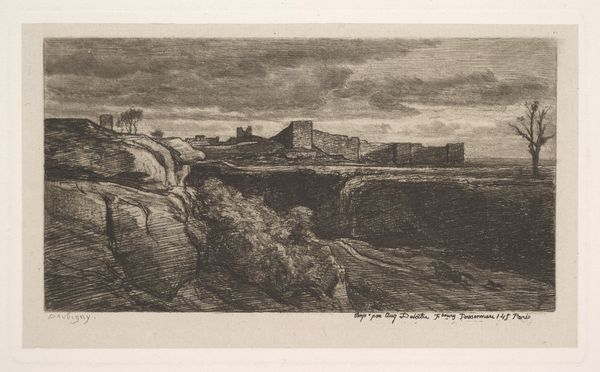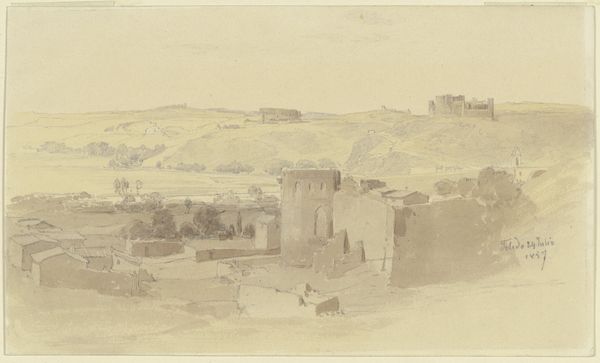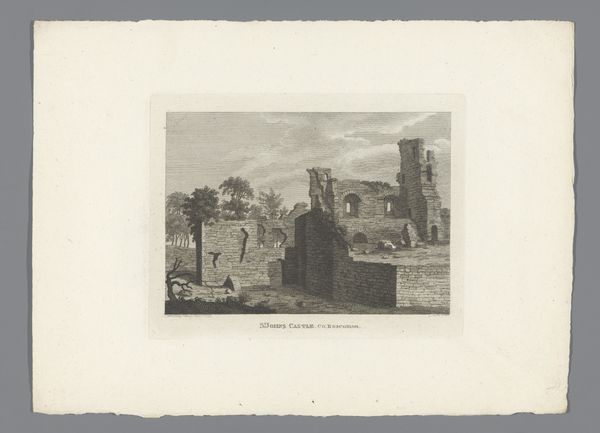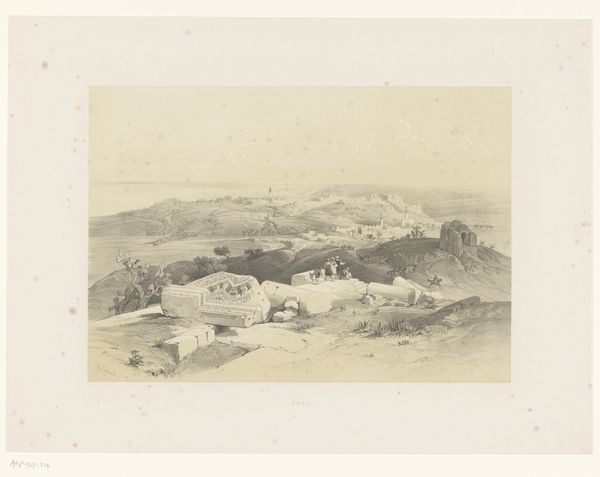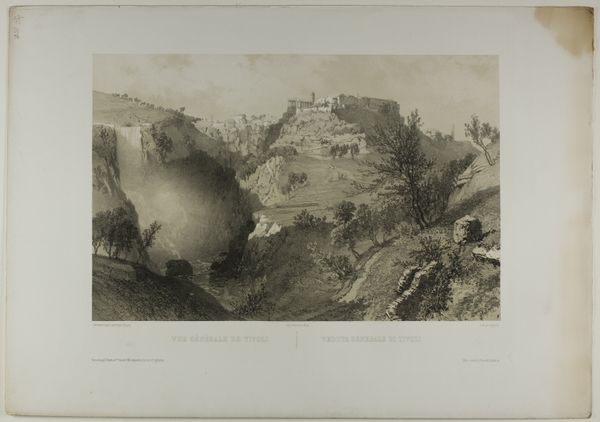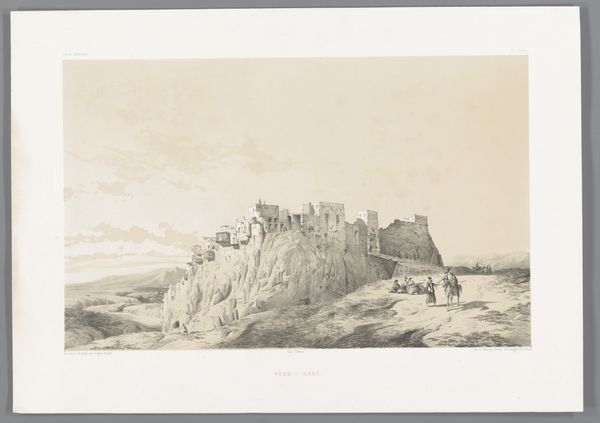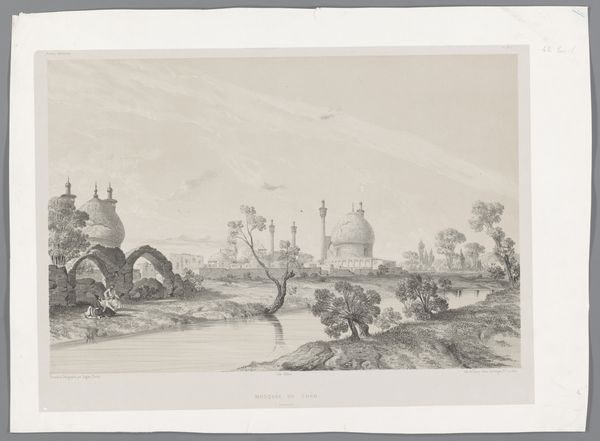
lithograph, print, etching, engraving
#
faded colour hue
#
aged paper
#
pale palette
#
muted colour palette
#
pale colours
#
lithograph
# print
#
etching
#
light coloured
#
landscape
#
white palette
#
orientalism
#
line
#
pale shade
#
cityscape
#
islamic-art
#
natural palette
#
soft colour palette
#
engraving
#
realism
Dimensions: height 450 mm, width 560 mm
Copyright: Rijks Museum: Open Domain
Editor: Here we have Eugène Flandin's "Shemranpoort in Teheran," created sometime between 1843 and 1854. It’s an etching or lithograph… the muted tones give it a somewhat dreamlike, antique quality. What stands out to you when you look at it? Curator: I’m immediately drawn to the symbolism embedded in what you call its ‘antique quality.’ The pale shades and faded details speak to the passage of time, yes, but also the endurance of memory. Consider how the architecture - the gate, the walls - acts as a cultural container. What stories do you imagine are held within those stones? Editor: That's interesting...I guess I hadn't thought about the walls *telling* a story, so much as just *being* there. What specific visual cues point to that kind of symbolic interpretation? Curator: Observe how the artist rendered the human figures, almost dwarfed by the imposing architecture. This subtly communicates the power of place, the continuity of a culture that transcends individual lives. The riders approaching the gate could be figures from any era in that city's history. Editor: I see what you mean. So the lack of strong detail, the muted colors… it’s less about a specific moment, and more about a lasting idea? Curator: Precisely! And look at how the light interacts with the scene; the soft washes create a sense of timelessness. What psychological effect does that have on the viewer, do you think? Editor: I guess it makes it feel more distant, somehow. Less immediate, but maybe more profound? It's like looking at a memory… altered, but still powerful. Curator: Exactly. This work offers us a glimpse into how visual symbols can bridge temporal gaps, evoking cultural memory. There’s a poignancy in seeing something ancient still standing, still carrying meaning. Editor: I never would have thought about all that just from looking at a cityscape. Thanks for sharing your insight.
Comments
No comments
Be the first to comment and join the conversation on the ultimate creative platform.
